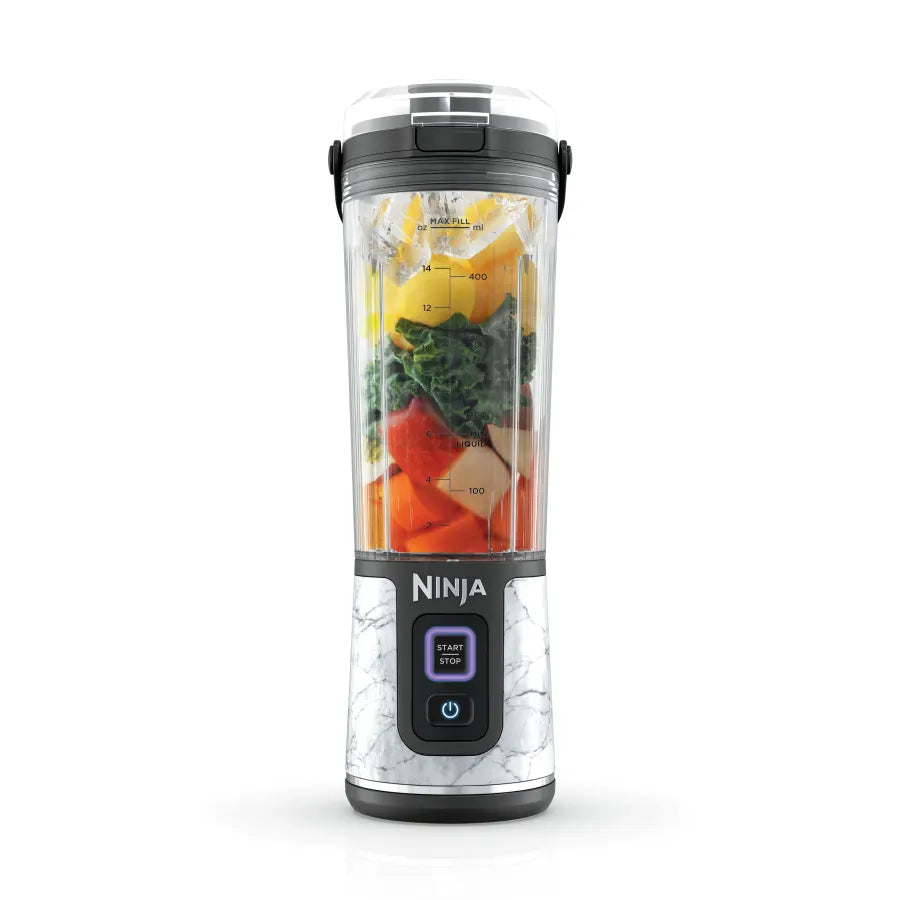From time to time in our lives, we struggle to shop for small appliances. Not only do they perform some of the same functions, but they also cost about the same, making it difficult to decide which one is better for our daily use. As with our topic today, buying a juicer or a blender can be a particularly tough choice - both have similar features but specialise in different areas.
Being a pro product tester, I've tried tons of juicers and blenders, and trust me, they ain't the same in the kitchen. You might squeeze juice out with a blender, but soup? Nope! Pick the right gadget based on your recipes!
What is the difference between them?
1.Principle of operation
Blender:
High-speed rotating blades: Blender combine high-powered motors with razor-sharp blades that spin at speeds ranging from 20,000 to 50,000 RPM. Through high-speed rotation the device breaks down food cell walls to release additional nutrients.
Versatility: Many wall breakers feature a heating function beyond their blending and mixing capabilities to help you prepare hot soups, soya bean milk, rice pudding and various other dishes.
Handles tough ingredients: These appliances can easily process hard ingredients like nuts and ice along with whole grains.
Juicer:
Squeeze or centrifugal separation: Juicers extract juice from pomace by applying either squeezing pressure or centrifugal force through rapid rotation. Juicer types often include centrifugal juicers and cold press slow juicers.
Single function: Juicers extract juice from fruits and vegetables but cannot process hard ingredients.
Juice clarity: The juice produced through pomace separation results in a clearer liquid with a refreshing flavor.
2. Ingredients processing
Blender:
Diverse ingredients: The Blender machine handles multiple types of ingredients ranging from fruits and vegetables to nuts, seeds, grains and beans.
Whole food use: The Blender produces drinks that keep all the original ingredient components including fibre which results in a more substantial taste and complete nutrition.
Juicer:
Fruit and vegetable based: The primary function of juicers is to process fruits and vegetables for juice extraction.
Separation of pomace: Juicers extract juice from foods while separating out the pomace which is mostly discarded resulting in a clearer juice.
3. Nutrient retention
Blender:
High nutrient retention: The Blender process releases more vitamins, minerals and antioxidants by breaking down food cell walls.
Fibre retention: Drinks created using a Blender contain all original fibres that support digestion and enhance fullness.
Juicer:
Some nutrients are lost: When juicers remove juice from pomace they inadvertently discard some of the fibre and nutrients along with it.
Rapid absorption: Removing fibre from juice makes it absorb faster in the body which helps people needing immediate energy.
4. Cleaning and Maintenance
Blender:
Complex structure: The Blender contains multiple elements like blades and motor base which makes its cleaning process demanding.
Self-cleaning function: Certain expensive wall-breaking machines come with self-cleaning features which make the cleaning process easier.
Juicer:
Simple structure: The centrifugal juicer stands out with its simple structure which makes cleaning much easier.
Manual cleaning: Although most juicers require manual cleaning, their limited parts make the cleaning process quicker.
The best tasks for a juicer
As you may have guessed, the best task for a juicer is, well, making juice! These amazing gadgets can juice virtually any produce, from apples to spinach to carrots. They separate the liquid (and nutrients!) from the pulp, resulting in delicious, fresh, healthy homemade juice.
But juicers have so many more uses! Many juicers can extract liquid from ingredients and strain out the solids. The best masticating juicers can even make fresh almond milk or other nut milk – just add water and soaked nuts and let the juicer do its magic!
And if you're looking for even more culinary adventures, some juicers even come with special attachments for making frozen desserts or smoothies. And if you're all about smoothies, then look no further than the best blenders for smoothies, which are designed to give you the best results every time.

You’ll want to consider different features when shopping for a blender.
Here are the main considerations.
Capacity:
Large-capacity juicers are ideal for batch juicing.
Compact juicers require less counter space and work well for individual servings.
Power:
Tough produce such as carrots and beets can be processed efficiently with high-powered juicers.
Less powerful juicers often fail to properly process hard vegetables while resulting in juice loss.
Ease of Cleaning:
The cleaning process for some juicers involves disassembling multiple parts and scrubbing them.
Make sure your juicer has parts that can be cleaned in the dishwasher or comes with cleaning brushes.
A difficult-to-clean juicer may discourage frequent use.
Noise Level:
Centrifugal juicers function at high speeds which results in a loud operation.
Masticating juicers produce less noise making them ideal for morning use or shared living areas.
Type of Juicer:
Centrifugal juicers operate quickly but their process generates higher oxidation which leads to reduced nutrient retention.
Masticating slow juicers maintain nutritional content effectively for leafy greens even though they operate at a slower pace.
Durability & Build Quality:
High-quality plastic and stainless steel components display greater longevity compared to materials of lower quality.
Price & Warranty:
Juicers with higher price tags often deliver superior performance and extended durability.
The decision to purchase a juicer involves multiple considerations to help you select the ideal machine for your requirements. Capacity should be among the initial considerations when choosing a juicer.
Choosing a juicer that features larger pulp containers and juice reservoirs will help you make big batches of juice more efficiently by saving time and effort. If you plan to make juice solely for personal consumption then a compact juicer with limited capacity might suit your needs better because it requires less space on your counter.
The power output of a juicer is essential because it affects how effectively it can process fruits and vegetables into juice. Juicers with high wattage power can effortlessly process tough produce including carrots, beets and leafy greens. Models with less power encounter difficulties processing tough foods and may produce less juice resulting in waste.
People often ignore cleaning simplicity yet this aspect determines the frequency of your juicer's use. Many juicers require disassembly and thorough scrubbing after each use because they have multiple parts which makes the cleaning process tedious.
Choose juicers that feature dishwasher-safe parts or special cleaning brushes to simplify maintenance. If a juicer proves challenging to clean it will likely remain an unused item on your kitchen counter. Another factor to consider is noise level.
The high-speed operation of centrifugal juicers results in loud noise which becomes disruptive when juicing early in the morning or within shared living quarters. Masticating juicers operate at reduced speeds to create minimal noise which makes them preferable for those who desire a quieter juicing experience.
After you weigh the main factors you should also evaluate which juicer type fits your personal requirements. Centrifugal juicers work quickly on hard produce but their heat generation and oxidation process leads to minor nutrient loss. Masticating (slow) juicers maintain more nutrients and effectively process leafy greens yet require more time and present higher costs.
The durability and build quality of juicers matter because stainless steel or high-quality plastic components outlast less expensive materials. Finally, consider the price and warranty. Investing more initially for a superior juicer will pay off by minimizing repair needs and boosting juice production efficiency. A solid warranty offers peace of mind because it protects your juicer from manufacturing defects.
Finding the ideal juicer requires evaluating capacity alongside power output and cleaning convenience as well as noise levels while taking into account type durability along with price and warranty which will help integrate juicing into your routine.
A strong warranty offers both security and protection from product defects.




Share:
The Best Masticating Juicer in 2024
The Best Juicer Machine in 2025